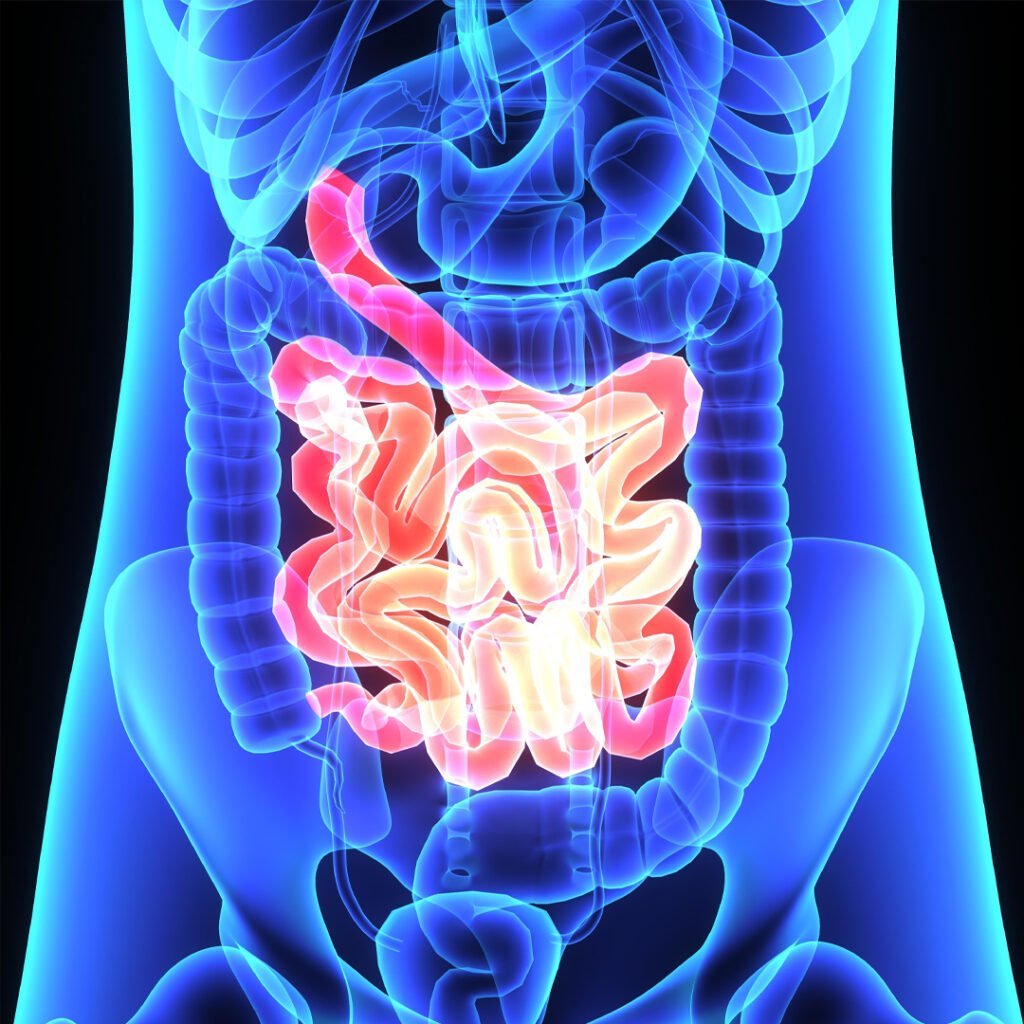Malabsorption
Introduction
Malabsorption is a digestive disorder in which the small intestine fails to absorb essential nutrients such as carbohydrates, proteins, fat, vitamins and minerals from food. This condition leads to nutritional deficiencies, weight loss, weakness and other health issues. This may result in various gastrointestinal diseases, infections or deficiencies of enzymes.

Types of Malabsorption
Carbohydrate Malabsorption
It occurs when the body cannot digest or absorb carbohydrates, causing inflammation, diarrhea and stomach problems after consumption of carbohydrates.
Protein Malabsorption
It occurs when proteins do not break or are not absorbed adequately, which gives muscle ruin, weakness, inflammation and nutritional deficiencies.
Fat Malabsorption
Results from impaired digestion or absorption of dietary fats, leading to greasy stools, weight loss, and essential fatty acid deficiencies.
Vitamin and Mineral Malabsorption
The inability to absorb essential vitamins and minerals causes fatigue, anemia, bone weakness and impaired immune system functioning.
Causes of Malabsorption
- Damage to intestinal lining from conditions such as celiac disease affects nutritional absorption.
- Chronic pancreatitis reduces digestive enzyme production, causing improper breakdown of nutrients.
- Lactose intolerance has difficulty digesting lactose, resulting in inflammation and diarrhea.
- Inflammatory bowel disease such as inflammation of the chrohan reducing the absorption of the nutrients of Crohn.
- Parasitic infections damage the intestines, causing observation of essential nutrients.
- The liver or gallbladder affects bile production, fat affects digestion and absorption.
- Surgical removal of parts of the intestine reduces its surface area for the absorption of nutrients.
- Some drugs, such as antibiotics or laxatives, interfere with proper digestion and absorption.
- Bacterial overgrowth in the small intestine changes the absorption and digestion of nutrients.
- Radiation therapy or chemotherapy damages the intestinal cells, causing nutrient deficiency.
Clinical features of Malabsorption:
Chronic Diarrhea
There are frequent, loose, water stool due to improper digestion and absorption of nutrients.
Weight Loss
Significant weight reduction happens because the body fails to absorb essential nutrients from food.
Abdominal Distension
Inflammation and inflammation of the stomach is caused by gas accumulation from uninterrupted food.
Nutritional Deficiencies
Deficiency of vitamins, minerals, and proteins leads to fatigue, weakness, and other health problems.
Steatorrhea
Passage of pale, greasy, foul-smelling stools results from improper fat absorption in the intestines.
Symptoms associated with Malabsorption:
- Cronic diarrhea occurs due to poor absorption of nutrients in the intestines.
- Unexpected weight loss is caused as nutrients are not properly absorbed.
- Unmarried food in the intestines results in stomach swelling and discomfort.
- Fatigue develops due to lack of essential vitamins and minerals.
- Yellow, smooth stool appears due to improper fat absorption.
- Muscle wastage is caused by insufficient protein absorption over time.
- Anemia develops due to iron, vitamin B12, or folate deficiency.
- Bone weakness arises from poor calcium and vitamin D absorption.
Investigations in Malabsorption:
- A CBC helps identify anemia, infection, and overall health status in malabsorption. Low hemoglobin indicates iron deficiency, while elevated white blood cells suggest infection or inflammation. Platelet counts may also rise due to chronic inflammation. This test provides a general overview of nutritional and health deficiencies in affected patients.
Measuring electrolytes, albumin, and total protein levels helps detect nutrient deficiencies caused by malabsorption. Low protein levels may indicate poor protein absorption. Electrolyte imbalances can lead to dehydration, weakness, or cardiac issues. These tests help assess the severity and systemic effects of malabsorption on the body.
Stool tests detect fat, blood, and inflammatory markers such as calprotectin or lactoferrin. Presence of fat in stool (steatorrhea) confirms fat malabsorption. These tests also help rule out infections or other gastrointestinal disorders. Stool analysis is a non-invasive, first-line investigation in patients with malabsorption symptoms.
This test quantifies fat content in stool over 24–72 hours. Excess fat indicates fat malabsorption. It helps identify pancreatic insufficiency, bile acid deficiency, or small intestine disorders. The fecal fat test is especially useful in confirming the cause of greasy, bulky stools and guiding further treatment.
Blood tests for vitamins A, D, E, K, B12, folate, and minerals like iron and calcium determine specific deficiencies. Detecting these deficiencies helps guide supplementation and treatment. Abnormal levels indicate impaired absorption and can explain clinical manifestations such as anemia, bone weakness, or neurological symptoms.
Upper or lower gastrointestinal endoscopy allows direct visualization of the intestinal lining. Biopsy samples from the small intestine can detect celiac disease, Crohn’s disease, or other structural abnormalities. Histopathology confirms the diagnosis and helps differentiate between different causes of malabsorption, guiding appropriate management and therapy.
Imaging techniques like CT enterography or MRI provide detailed views of the small intestine. They detect structural abnormalities, inflammation, strictures, or tumors causing malabsorption. Imaging helps evaluate the extent of disease involvement and can guide further diagnostic procedures or surgical planning if required.
Used to detect carbohydrate malabsorption, especially lactose or fructose intolerance. Undigested carbohydrates are fermented by intestinal bacteria, producing hydrogen detected in breath samples. This non-invasive test helps identify specific malabsorption causes and guides dietary modifications to manage symptoms and prevent further nutritional deficiencies.
Tests like fecal elastase or serum pancreatic enzyme levels evaluate pancreatic insufficiency. Reduced enzyme production affects protein, fat, and carbohydrate digestion, leading to malabsorption. Identifying pancreatic dysfunction is essential for proper enzyme replacement therapy and symptom management in patients with chronic pancreatitis or other pancreatic disorders.
Blood tests for anti-tissue transglutaminase (tTG) and anti-endomysial antibodies detect celiac disease. Positive results indicate an autoimmune response causing intestinal damage and malabsorption. These tests help confirm celiac disease before or along with biopsy, guiding dietary treatment with gluten restriction to restore nutrient absorption and health.
